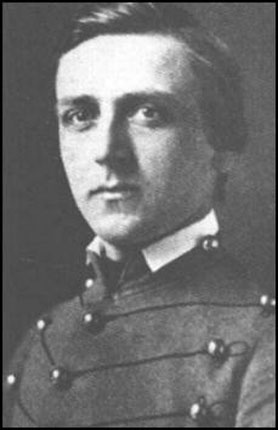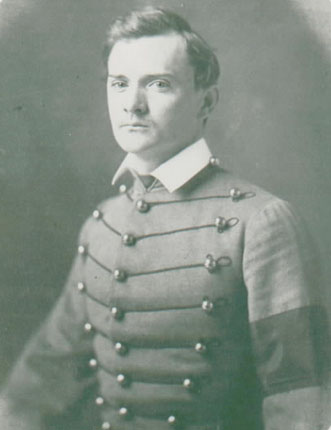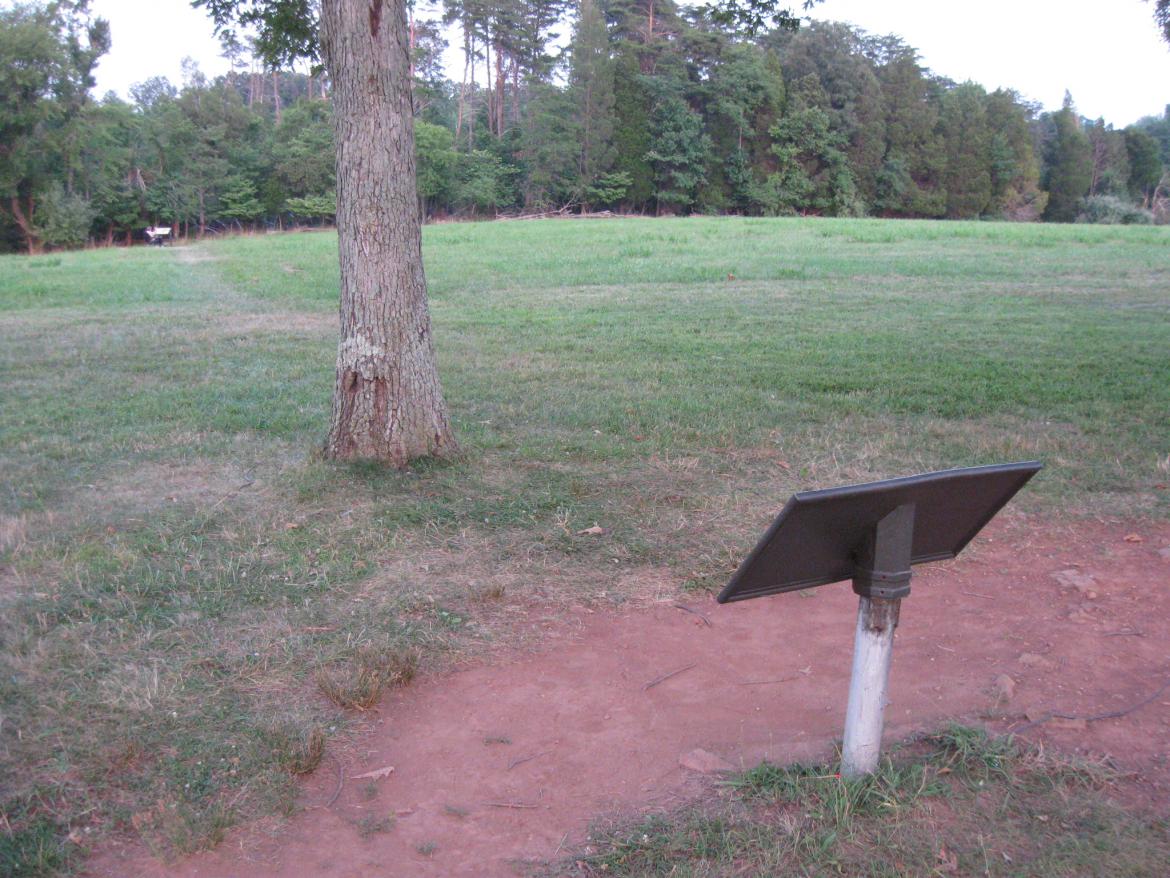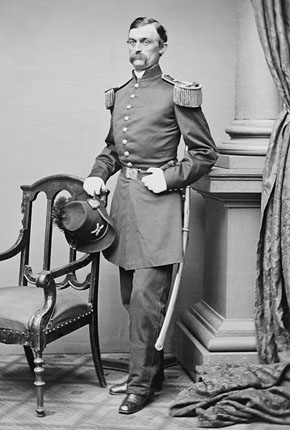Major General Charles Griffin (1825-1867) was a Captain commanding Battery D, 5th United States Artillery at the First Battle of Manassas. Griffin taught artillery tactics at West Point and formed an artillery battery from the academy's enlisted men and some academy graduates in May, 1861. The graduates were probably some of his prize pupils at the academy. This battery was nicknamed the "West Point Battery." During the Gettysburg Campaign, Griffin commanded the First Division of the Fifth Corps, but was not present at Gettysburg on July 1-2, 1863. He arrived on the Gettysburg battlefield on July 3, 1863, but did not assume command of the division from Brigadier General James Barnes until July 4, 1863. This image, courtesy of the Library of Congress, was taken facing circa the 1860s.
The Gettysburg Daily decided on Thursday, July 21, 2011 that after finishing their tours at Gettysburg to drive to Manassas. The goal was to stand on the ground on the 150th anniversary of the Battle of First Manassas, to document the scene, and to avoid the crowds.
This is the National Park Service Map of Manassas National Battlefield. Most of the map shows areas concerning the Second Battle of Manassas, which was fought from August 28-30, 1862. Today, we are concerned about the First Battle of Manassas, which was fought on July 21, 1861. This final stages of the battle centered around the Henry Hill area, shown in the bottom right of the map. This map was scanned facing north at approximately 11:00 AM on Friday, July 22, 2011.
This is the National Park Service Map of the area around Henry Hill for the 150th anniversary period. Large tents, tractor trailers, Coca Cola trucks, Pepsi trucks, food stands, etc... dot the hill of the first major land battle of the American Civil War. So if you had thoughts of going to the battlefield and to be transported back in time 150 years ago, that was difficult. This map was scanned facing north at approximately 11:00 AM on Friday, July 22, 2011.
At the Battle of Gettysburg, on July 2, 1863, Battery D, 5th United States Artillery was positioned on Little Round Top. This image was taken facing northeast at approximately 6:30 PM on Thursday, June 2, 2011.
 a>
a>
When Captain Charles Griffin was forming his West Point Battery, he not only chose enlisted men, he also picked up a couple of recent graduates such as Adelbert Ames (1835-1933). Ames graduated fifth in the Class of 1861 on May 6, 1861 and was commissioned a 2nd Lieutenant in the 2nd United States Artillery. Eight days later, however, on May 14, 1861, Ames was promoted to First Lieutenant in Griffin's Battery D, 5th United States Artillery. He was badly wounded in the right thigh at First Manassas, but was priased for refusing to leave his guns. This view was taken circa 1861.

The other First Lieutenant for Battery D, 5th United States Artillery was Charles Hazlett (1838-1863) Hazlett graduated fifteenth in the Class of 1861. When he graduated on May 6, 1861 he was commissioned a 2nd Lieutenant in the Second United States Cavalry. Like Adelbert Ames, however, he was promoted to First Lieutenant in Griffin's West Point Battery on May 14, 1861. Sources place him at First Manassas on July 21, 1861, but he is not mentioned in the report listing artillery officers at Manassas by Major William F. Barry. Hazlett was killed on Little Round Top on July 2, 1863 while he commanded Battery D, 5th United States Artillery. This view was taken circa 1861.
2nd Lieutenant Benjamin Rittenhouse (1839-1915) was appointed 2nd Lieutenant on May 14, 1861, but did not join Battery D, 5th United States Artillery until October, 1862. He commanded the West Point Battery after Hazlett was killed at Gettysburg on July 2, 1863. This view was taken circa the 1870s.

At Manassas on July 21, 1861 Captain Griffin was ordered to take his battery to the right part of the Union line and enfilade the Confederate Artillery pieces of Stonewall Jackson's line. This view was taken facing northeast at approximately 8:30 PM on Thursday, July 21, 2011.

The position of Griffin's guns is marked by the artillery pieces in the background near the trees. The marker in the foreground is to Second Lieutenant William Preston Mangum. This view was taken facing southwest at approximately 8:45 PM on Thursday, July 21, 2011.

Griffin believed that in the trees to his battery's right or east that there were Union troops sent to his support. The sign in the foreground is to Second Lieutenant William Preston Mangum. This view was taken facing southeast at approximately 8:45 PM on Thursday, July 21, 2011.

However, there were not Union soldiers here. Confederate soldiers were here. This view was taken facing southeast at approximately 8:45 PM on Thursday, July 21, 2011.

The 33rd Virginia Infantry Regiment of what would be known as the Stonewall Brigade. This view was taken facing southeast at approximately 8:45 PM on Thursday, July 21, 2011.

Griffin's guns fired two rounds from this position before the 33rd Virginia charged on them from left to right or east to west. This view was taken facing southwest at approximately 8:45 PM on Thursday, July 21, 2011.

Griffin's battery was a mixture of four 10 pounder parrotts and two twelve pounder howitzers, such as the pieces shown here. This view was taken facing southwest at approximately 8:45 PM on Thursday, July 21, 2011.

Stonewall Jackson, the former artilleryman, had warned his men that the Union might attempt to place artillery here and to be on the lookout for any federal cannon. This view was taken facing east at approximately 8:45 PM on Thursday, July 21, 2011.

Griffin was ordered to this position by Major William F. Barry of the 5th United States Artillery. This view was taken facing east at approximately 8:45 PM on Thursday, July 21, 2011.

Union reinforcements would arrive in this area. In the background is the Civil War 150th Anniversary Trailer. This view was taken facing southwest at approximately 8:45 PM on Thursday, July 21, 2011.

By the way, Griffin's report states that of his six guns, all that was left of his battery was one Parrott and one twelve pounder howitzer limber. This view was taken facing southwest at approximately 8:45 PM on Thursday, July 21, 2011.

The Manassas National Battlefield Visitor Center and Parking Lot are in the background. This view was taken facing north at approximately 8:45 PM on Thursday, July 21, 2011.

The Union began their retreat from Manassas... This view was taken facing north at approximately 8:45 PM on Thursday, July 21, 2011.

... and so finally, are we. This view was taken facing west at approximately 8:45 PM on Thursday, July 21, 2011.
We feel the best book on the Battle of First Manassas is John Hennessy's book,
First Battle of Manassas: An End to Innocence.
It is part of the Virginia Civil War Battles and Leaders Series by H.E. Howard.
This image was scanned facing north at approximately 7:40 PM on Sunday, August 7, 2011.We feel the best picture book on the Battle of First Manassas is Gettysburg Licensed Battlefield Guide Gary Adelman's book, Manassas Battlefields Then and Now.
You can order it from the CCWP by clicking here. This image was scanned facing north at approximately 3:40 PM on Sunday, September 18, 2011.


 a>
a>













